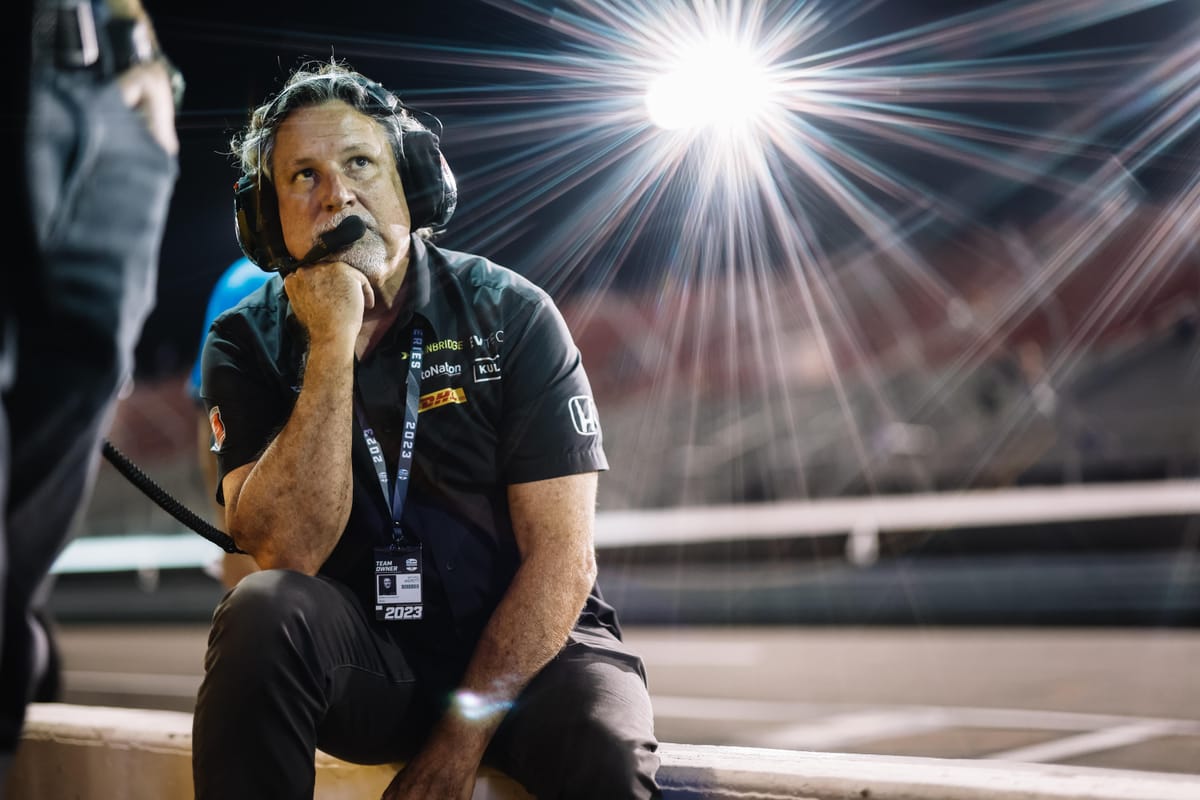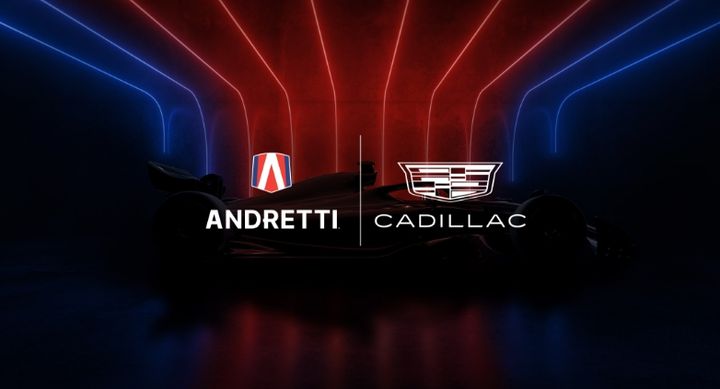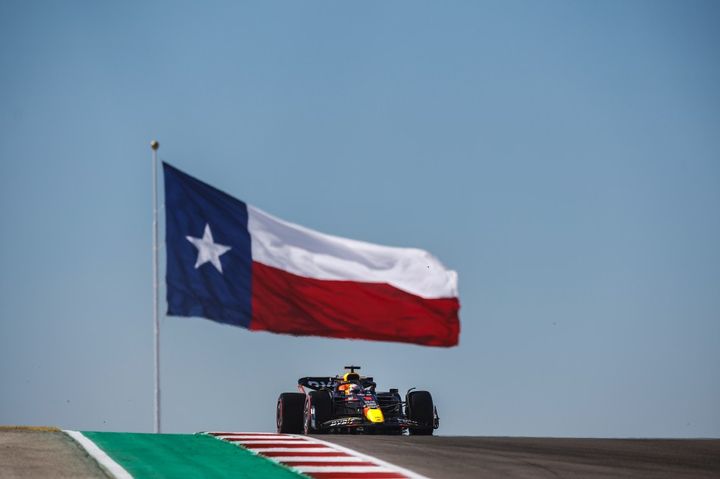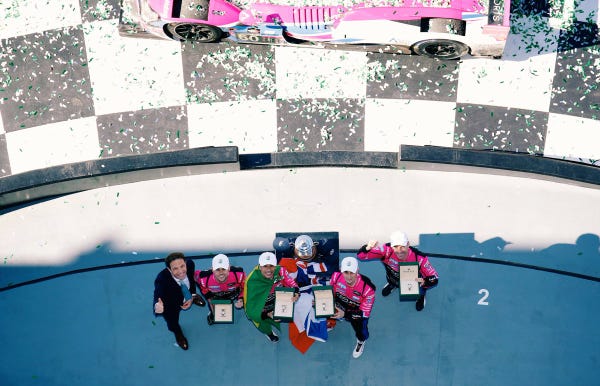COLUMN: Out of touch Andretti rejection makes F1 goals clear: money over everything
It's infuriating to anyone involved in motorsports that Andretti's Formula One entry was rejected. F1's pattern of money over everything continues to insult and ignore American interests, and it's not changing anytime soon.

In the last decade, a chief criticism of Formula One has been its increasing ignorance of fans. Usually, that means leaving classic and historic venues off the schedule in the name of rather soulless and unwanted street circuits, sometimes in locales notorious as serial human rights abusers, so series leadership can have photos of their cars zooming by castles and international landmarks, whether or not the drivers, fans or citizens of those places actually want a race there — so long as the check cashes.
It should be no surprise then that Andretti Global was denied its application to join the Formula One grid Wednesday. Following years of lobbying, networking, development and just about anything you would want to ask of a new entry into what is allegedly the world's pinnacle of motorsports, they decided to deny the American outfit led by Michael Andretti with significant support from Detroit-based auto giant General Motors a spot on the grid.
It's infuriating to anyone involved in motorsports that Andretti, who assembled perhaps the best plan and initial execution of new entry Formula One in the 21st century, won't be on the grid until 2028 at the absolute earliest. And that's assuming Formula One Management was truthful in its assessment that a new power unit from General Motors would legitimately position Andretti to add whatever value requirement they're looking for to the grid.
That value is almost certainly, and plainly, money. It cuts the pie into more pieces if Andretti is on the grid, and Formula One doesn't feel like sharing. It's a clear signal that Formula One does not care about producing a competitive and equitable racing series, only protecting their immediate assets and growing their financial portfolios. It's a short-sighted decision that will almost certainly lead to the end of America's Formula One bubble if unchanged.
Andretti responded Wednesday evening, stating, "Andretti Cadillac has reviewed the information Formula One Management Limited has shared and strongly disagree with its contents. Andretti and Cadillac are two successful global motorsports organizations committed to placing a genuine American works team in F1, competing alongside the world’s best. We are proud of the significant progress we have already made on developing a highly competitive car and power unit with an experienced team behind it, and our work continues at pace."
Reading the rejection letter is an exercise in masochism for Americans who watch motorsports beyond a casual level. Perhaps most infuriating in it, and a telling example of F1's intentions in the 2020s, comes in one of FOM's conclusions on why Andretti isn't allowed to race.
16: While the Andretti name carries some recognition for F1 fans, our research indicates that F1 would bring value to the Andretti brand rather than the other way around.
Why on earth is this a criteria for rejecting an entry to the "pinnacle of motorsport?" We live in a world where — and no disrespect to Gene here — Haas F1 was admitted to the sport just under a decade ago and has yet to score a podium and introduced two of the worst sponsors in motorsports history to the Formula One brand. Andretti and Cadillac are suddenly too poor a brand to be supported by the prestige of Formula One? The same one that will field a team sponsored by a cryptocurrency casino and a Red Bull B team sponsored by Cash App in 2024?
In short, that line about brand value is a cop out to reject Andretti and keep all the revenue generated by Formula One for themselves — a not insignificant portion of which comes from American interests generated almost entirely generated by a Netflix documentary series and bolstered by a hyper-competitive 2021 season, an outlier when looking back to series results since 2011.
Talking about brand value, a rebadged Renault engine would almost certainly carry an equitable exposure as a works engine from Cadillac to the casual fan. If the record books count Red Bull's second and third place campaigns from 2016-18 as a Tag Heuer-badged power unit, when in reality it was a rebadged Renault engine, what's the difference if Andretti planned the exact same arrangement as a stop gap before bringing GM in when they were ready for new regulations in 2028?
Mario Andretti is an F1 world champion, won 12 Grand Prix, and has further American and international credibility as a winner at the Indianapolis 500, Daytona 500 and a runner-up at the 24 Hours of LeMans. He's a legend of motorsport at every level, and it could be argued was the most famous race car driver in America for a time, until the rise of NASCAR in the late 1990s coincided with the CART-IndyCar split.
If his last name isn't good enough value for Formula One, I don't know what is. But then again, that would imply FOM gave Andretti a legitimate chance to join the grid, which doesn't appear to be the case. FIA president Ben Sulayem put it best last October, days after the FIA approved Andretti's entry despite the likelihood it would be rejected by Formula One.
“Let’s not play a game here,” Sulayem said. “It is about the money.”
Andretti Global, formerly Andretti Autosport, has, just in the last ten years, won three Indianapolis 500s and 24 IndyCar races, last year's Formula E driver's championship with Jake Dennis, and entered into IMSA's top GTP class with Acura and a partnership with Wayne Taylor Racing, already scoring a podium on its own at last weekend's 24 Hours of Daytona. That's not including its successful efforts in Extreme E, Australian Supercars, Rallycross and Indy NXT.
Andretti has raced just about everything and been competitive in all efforts. On top of that, Andretti has been proud to give American drivers, crews and sponsors an opportunity to take the stage and showcase what they're capable of.
This rejection should leave American fans feeling insulted and scorned by Formula One leadership. If FOM is worried about losing money, they'd better be aware of American sports fans, who will gladly flock to a sport that gives them a reason to, but will almost just as quickly leave when it doesn't respect their desires, efforts and interests.
F1 was already run out of the country once this century. From 2000-2007 it played a comfortable third fiddle to IndyCar and NASCAR at the Indianapolis Motor Speedway when it came to ticket sales and viewership. F1 only made it back to the U.S. when it began racing at the Circuit of the Americas in Austin, Texas, establishing a physical foothold in a market it could own, one filled with younger, hip folks who spread word of how cool it was to see some of the fastest cars in the world stop by once a year on American soil.
Even now, in the best period for Formula One in the U.S. in its modern era, it still sits third to NASCAR and IndyCar in pretty much every measurable category. It leads in the 18-49 year old TV viewership demographic, which is not insignificant at all. That's a really broad age range however, and it's likely that the majority of that distribution comes with younger individuals who picked up the sport from Drive to Survive.
One issue with having such a young demographic involved in your sport? Bad news spreads fast. News of issues with Las Vegas spread quickly with fans last November on social media and other outlets, and Andretti's rejection will almost certainly be more damaging to Formula One's reputation among its key demographic in America — apart from those residing in Clark County, Nevada.
F1 has expanded to three races in the U.S. starting last year, with the aforementioned Las Vegas street circuit joining another street course in Miami, Florida, and the USGP at COTA. In hindsight, the street courses feel like nothing more than half-baked cash grabs, clumsily stepping on the cities they enter with circuits that don't challenge drivers, beyond pushing them to boredom or heat stroke. There's a pattern here, and it doesn't serve U.S. fans well at all.
Jan. 31, 2024, might as well serve as the canary in the coal mine for anyone with a significant financial stake in American F1 interests: be careful about how much you're willing to be involved with the series. There are faster, more inclusive and more competitive options than Formula One in America and around the world. All of them are touting the same growth post-COVID-19 pandemic in ticket sales and digital engagement, and plenty of American fans are fuming today at the FOM. They'd be happy to watch an alternative motorsport, of which almost every other option will provide a more competitive championship — from NASCAR, to IndyCar, to IMSA and even the NHRA.
F1 will likely weather the storm for a while anyways on star power alone, and it may even set some viewership highs this season. It may even edge out its direct open wheel competitor on TV, IndyCar, in average viewership in 2024 after NBC had to shuffle its broadcast sports properties around to accommodate for the Summer Olympics, forcing more races than last year onto cable instead of over-the-air NBC.
F1 will need to overcome the least competitive F1 championship in history and the rejection of one of America's most prestigious racing names to do so.
UPDATE: This column has been updated to include a joint response from Andretti Global and Cadillac.





Comments ()